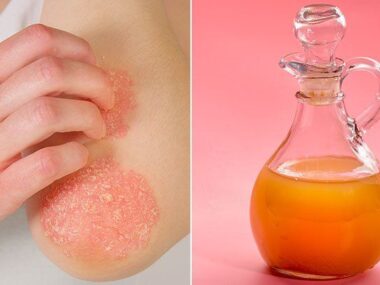Both vaginal infections and vaginitis, or vaginal inflammation, are extremely common; in fact, most women will certainly experience both at some point in their lifetime.
Vaginal discharge, itching, burning, pain, and a strong odor are a few signs of either a vaginal infection or vaginitis.
While some vaginal infections are brought on by STDs, other, highly prevalent ones are not.
According to Gregory R. Moore, MD, MPH, an obstetrician-gynecologist at Stamps Health Services at the Georgia Institute of Technology in Atlanta, certain women appear to be more susceptible to vaginal infections than others for reasons that are not totally clear.
What Disrupts the Normally Balanced Vaginal Ecosystem
Although it may not always be infected, a typical, healthy vagina includes germs and occasionally yeast. But certain factors can alter the environment in the vagina, allowing for bacterial or yeast overgrowth and resulting in discomfort. A few of these include:
- Douching, or rinsing the vagina with water or other liquid
- Female hormone level changes
- Taking antibiotics
- Vaginal intercourse
- Pregnancy and breastfeeding
While not all of these can be avoided, douching is unnecessary and potentially harmful.
The Most Common Types of Vaginal Infections
According to Cynthia Krause, MD, assistant clinical professor of obstetrics and gynecology at Mount Sinai School of Medicine in New York City, there are three highly prevalent types of vaginal infections: yeast infections, bacterial vaginosis, and trichomoniasis, a sexually transmitted disease.
Yeast Infection
Yeast infections, the most common type of vaginitis, are brought on by one of the many varieties of fungus referred to as candida. There are other types of yeast, or candida, but Candida albicans is the most prevalent, according to Dr. Krause.
Normally, modest amounts of candida can be found living inertly throughout your body, even in the vagina. But under some circumstances, a candida overgrowth can happen and result in a vaginal infection.
Changes in hormone levels brought on by menstruation, birth control pills, or pregnancy may be among these conditions. Having frequent or persistent high blood sugar and having lowered immunity as a result of a medical condition like HIV or AIDS are some additional factors that increase the risk of vaginal yeast infections.
A thick, white discharge that some women compare to cottage cheese is one of the symptoms of a vaginal yeast infection. Yeast infections can also make the vulva (the lips of the external female genital area) and vagina itchy and inflamed.
Trichomoniasis
Trichomonas vaginitis, often known as trichomoniasis, is the only one of the three most common vaginal infections that is truly a sexually transmitted infection, according to Krause.
Trichomonas vaginalis, a single-celled parasite that causes the condition known as “trich,” spreads from partner to partner during sex.
Trichomonasis symptoms include burning, irritation, redness, and swelling of the vulva as well as a yellow-gray, greenish, or even fishy-smelling discharge from the vagina. Additionally, for some women, it causes painful urination.
Bacterial Vaginosis
In the vagina, yeast and “friendly” bacteria called lactobacilli coexist. Bacterial vaginosis (BV) is a condition that can occur when the amount of lactobacilli drops too low.
Although the cause of the change in bacteria level is unknown, infection-causing bacteria can replace the usual lactobacilli.
The bacterium most frequently linked to bacterial vaginosis, according to Krause, is Gardnerella. The symptoms of infection are brought on by an infection’s lack of lactobacilli and an overgrowth of these other bacteria.
A woman who has bacterial vaginosis could experience a thick, white, or clear discharge. Both itching and burning are unlikely. It’s possible to smell fishy, especially during sexual activity.
Some Other Vagina-Related Issues
Other common vaginal infections and causes of vaginal itching include
Gonorrhea
Another extremely dangerous STD is gonorrhea, which can produce vaginal discharge, urinary pain, and pain during vaginal sex but frequently has no symptoms.
Women who test positive for one of these bacterial infections are frequently treated for the other since they frequently have both chlamydia and gonorrhea.
Noninfectious Vaginitis
Non-infectious vaginitis develops when the vagina becomes sensitive to an irritant, such as scented tampons, fragrant soaps, or fabric softeners. According to Moore, since there is no infection present, the first line of defense is to get rid of the offending substance.
RELATED: Common Types of Vaginal Infections
That might not always be sufficient, in which case additional treatment—like the use of steroids—could be necessary. Although the exact cause is not always clear, Johns Hopkins Medicine lists some common culprits as vaginal sprays and douches, items with dyes or perfumes, as well as soaps, detergents, and fabric softeners.
Another form of noninfectious vaginitis is called atrophic vaginitis, and it typically occurs when female hormone levels decrease around the time of menopause, and the vaginal walls become thinner, drier, and less flexible.
Chlamydia
Inflammation of the vagina may result from the sexually transmitted disease chlamydia. Chlamydia can discharge in some women while it does not in others. Women may have bleeding in between periods or following vaginal sex if the infection spreads beyond the vagina and cervix, according to Planned Parenthood. It’s crucial to keep in mind nevertheless that other factors can also lead to such bleeding.
Chlamydia practically comes with no symptoms, can linger and cause some fertility harm, thus Dr. Moore advises that sexually active women up to the age of 26 should be checked for it regularly.
Vulvodynia: Persistent Pain of the Vulva
Women who have vulvodynia have ongoing pain or discomfort in the vulva for no apparent reason. Burning, stinging, rawness, discomfort, and swelling are symptoms that are similar to vaginal infections. Both ongoing and sporadic symptoms are possible.
Viral Vaginitis
Vaginal infections can also be brought on by viruses. Sexual contact is the main way that viruses that directly damage the vagina are disseminated.
According to Moore, the herpes simplex virus frequently causes viral vaginosis. Genital pain from lesions or sores is one of the symptoms. The sores on the vulva or vagina are typically visible, but the best method to confirm the diagnosis, according to Johns Hopkins Medicine, is to have your gynecologist perform a pelvic exam if the infection is on the cervix or inside the vagina.
Vaginal Infection Treatment
All of these conditions are treatable, but in order to receive the proper care, it’s critical to identify the sort of infection or other condition you have.
However, “occasionally people think they have a yeast infection and it is truly something else,” according to Krause. “Yeast medication is available over the counter if you are positive that it is a yeast infection. You should consult a doctor if over-the-counter drugs don’t relieve your symptoms.





